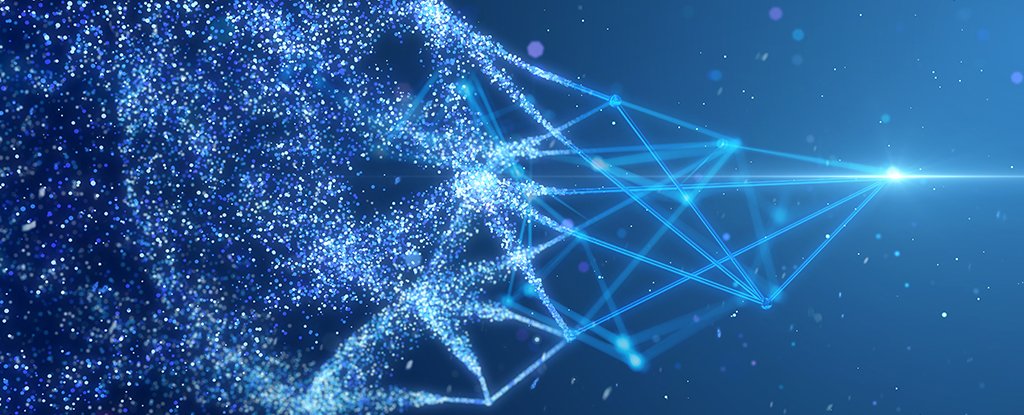
We live in an age of division. Of red hats versus blue votes. Black lives versus blue lines. Green energy versus gold purses. Society, it seems, is melting like some proverbial iceberg.
It's a metaphor that extends beyond the poetic. A model of social cohesion created by researchers from the Complexity Science Hub Vienna draws a comparison between phase transitions in materials and our own 'bubbles' of communal interaction.
Their model shows that society is at risk of approaching a tipping point of social bonds, potentially thanks to the rise of smart phones and social media.
As a broad topic, the cohesion of human communities has been of interest to sociologists for generations.
Studies are complicated by difficulties in agreeing on appropriate measures and ideals, making it hard to know if what we're experiencing today truly describes some kind of disintegration, or if our perception is being warped by evolving media and information technology.
To at least some extent, there's good reason to think that factors including disparities in wealth and changes in housing are driving fragmentation on a neighbourhood level. Beyond the local, the way we communicate is having a real impact on how we form friendships from afar.
"A few decades ago, we had to share our phone line with other households. Then every household had a line; later, every person had his or her own phone," says physicist and complexity researcher, Stefan Thurner.
"Today, smartphones connect us with people all over the world at all times – and simultaneously through many channels."
The information age and rise of social media was intended to bring us together. It's an optimism few now feel.
In fact, the study suggests that by introducing us to so many new social connections, it's created more division in society.
Faced with competition over who deserves our attention within our friendship circles, we've been forced to find ways to filter out those who stress us the most as an act of what is more formally known as homophily.
"People are happier when they do not disagree or argue with others," says Thurner's colleague Tuan Pham, the first author of the study.
"One can also say: Like will to like. In order to avoid stress, there is a tendency for opinions within a group to become more and more similar and aligned with each other."
With this in mind, the researchers combined the concept with a 65-year-old claim made by the Austrian psychologist Fritz Heider, who pioneered frameworks of psychology on a social level.
According to his social balance theory, we tend to hold perspectives on those around us that require little energy to maintain.
If we picture relationships as a kind of structure, such as a triangle connecting us with any two friends, stress on one side is something we often strive to rectify – such as by quickly resolving differences or cutting ties.
"What we like best is when all three in the triangle love each other," says Thurner.
Homophily applied to a kind of social balance triangle provides some interesting groundwork to develop models of social cohesion that resemble vast molecular networks, not unlike those we might use to describe the bonds in a crystal - or in ice.
Find the right combinations of stress in a block of ice, and it'll shatter. Raise the temperature, and it'll melt.
Similarly, stretch the bonds of friendships within a community of humans too far by adding too many connections, and sooner or later it'll hit a tipping point where the whole network can no longer maintain its shape.
"And here, we clearly see two social phase states: Either it is cohesive, meaning that there is cohesion and exchange and cooperation can take place, or the society disintegrates into small bubbles of like-minded people," says Thurner.
"Although they then get along well with each other, constructive communication across the bubbles is no longer possible. Society fragments."
The model's dynamics mimic those found in condensed matter physics, which might seem like an odd place to look for inspiration on something as complex as human interactions.
But as simple as the model might be, it provides a solid foundation for exploring the ramifications of vast social networks comprising of brains that never evolved to deal with so many relationships.
Researchers frequently reduce our interactions to simpler graphs to describe maps of interaction. All too often, the scene they describe is one of discord and imbalance that drives us to seek the company of others of our kind.
"If people stay within their bubbles and are no longer willing to leave these comfort zones, how are we, as a society, supposed to negotiate important issues and reach compromises that are the basis of all democracy?" says Thurner.
It's a problem without an obvious solution, one that might even be compared to engineering a form of ice that can withstand scorching temperatures.
That's not to despair. If there's an upside, research also suggests the level of fragmentation we'd expected from social media isn't quite as bad as it could be, hinting at hidden mitigating factors we could build upon.
The team is now seeking to test their model using large sets of data.
With luck they might even uncover hints to new technologies or short cuts to help us cope in an effervescent landscape of social bubbles.
This research was published in Journal of The Royal Society Interface.
"social" - Google News
November 20, 2020 at 01:11PM
https://ift.tt/35N0Jh5
Social Fragmentation Resembles The Melting of Ice - And We May Be Near Tipping Point - ScienceAlert
"social" - Google News
https://ift.tt/38fmaXp
https://ift.tt/2WhuDnP
Bagikan Berita Ini















0 Response to "Social Fragmentation Resembles The Melting of Ice - And We May Be Near Tipping Point - ScienceAlert"
Post a Comment